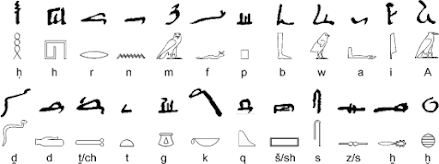Ancient Egypt and Its Contribution to the World Civilization
The ancient Egypt civilization lasted for over 3,000 years and became one of the most powerful and iconic civilizations in history. At its height ancient Egypt's Empire stretched as far north as modern day Syria and as far south as today's Sudan. But long before it was an empire.
Ancient Egypt was a series of small independent city states that bloomed along North Africa's Nile River. The city states were divided into two regions and named according to the flow of the Nile. Upper Egypt in the south which was upstream and lower Egypt in the north which was downstream. By about 3,100 BC the two halves divided thereby creating one Egyptian state that lasted for millennia. The reign of the civilization can be divided into three major periods of prosperity, called the Old Middle and New Kingdoms and two periods of instability in between, called the First and Second intermediate periods.
Egyptian Pharaoh
Source: livescience.com
Guiding the Egyptian people was a succession of about 300 rulers often referred to as Pharaoh's. Pharaoh, which means great house in Egyptian was never the rulers' formal title. It only became synonymous with a ruling individual in modern times. These rulers who were not always men nor Egyptian were considered protectors of the people and served as divine liaisons between humanity and hundreds of gods they worshiped. After the rulers passed away, ancient Egyptian believed they then became gods. To prepare their journey into the afterlife, the rulers constructed elaborate tombs including the Great Pyramids at Giza and underground mausoleums in the Valley of the kings. Rulers filled their tombs with all the items they could need in the afterlife including gold jewelry, food, drink and even pets. Preparing for the journey to the gods also involved mummifying ones’ body. The deceased corpse was embalmed wrapped in hundreds of yards of linen and placed inside the tomb so the body could be reanimated in the afterlife.
The Great Pyramid of Giza
Source: sciencealert.com
To this day, structures like the Great Pyramids are a testament to the role of religion in ancient Egyptians' lives. But they also represent the innovative and cultural might of the Egyptian people. Innovations in mathematics and written language in particular propelled their civilization to success. Math, specifically measurement mathematics helped the Egyptians understand and harness their world with numbers like no other civilization had before. They developed a new form of measurement called the cubit. It was used to design massive structures such as the Great Pyramid with remarkable geometrical precision. The Egyptian also measured time by combining mathematics with astronomy. They established a 24-hour division to the day and created a solar calendar which was the first dating system in the history to feature 365 days in one year. Lastly, Egyptians developed methods to measure and survey land around the Nile River. These civil engineering feats made way for the construction of dams canals and irrigation systems that helped farming and agriculture to flourish in the Nile Valley.
Egyptian HIERATIC Script
Source: omniglot.com
In addition to mathematical concepts, the ancient Egyptians also created written languages to describe the world around them. The oldest and one of the most well-known of these is hieroglyphic writing. This system was developed around 3,150 BC during the Old Kingdom and has over 700 pictorial characters. It was used to inscribe monuments and pottery and predominantly served a decorative or ceremonial purpose. Soon after, another ancient form of writing called HIERATIC developed out of the hieroglyphic system. It was a form of cursive that was written and inked and served a more functional purpose unlike it's more formal predecessor. HIERATIC was written on another ancient Egyptian innovation, PAPYRUS. PAPYRUS was a type of paper derived from the papyrus plant which grew plentifully along the Nile River. This medium gave the ancient Egyptian a new avenue of communication and record keeping that allowed their civilizations' administrative skill to grow and their culture to spread for thousands of years.
As with all great empires ancient Egypt came to an end. It was eventually conquered after a series of invasions including those by the Persian Empire in the 4th century BC and the Roman Empire around 30 BC. Not many civilizations can claim a lifespan of over 3,000 years, let alone one that made vast cultural contributions that still resonate in modern times. Ancient Egypt with its linguistic and mathematical spirituality, religion and extensive political and military might set a high standard for all civilizations that followed.






Comments
Post a Comment